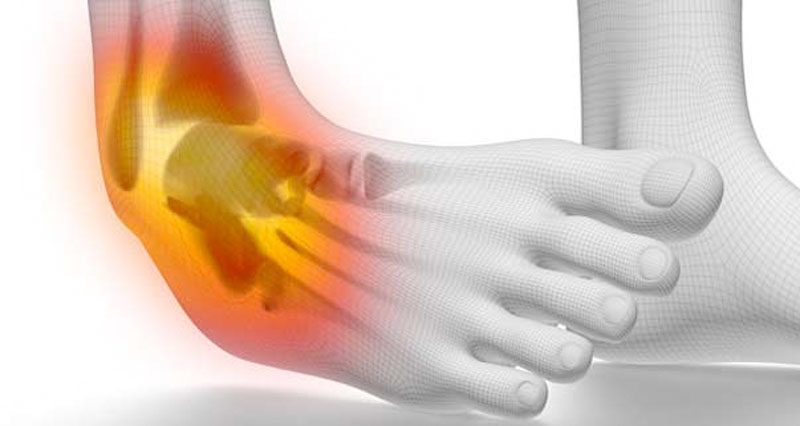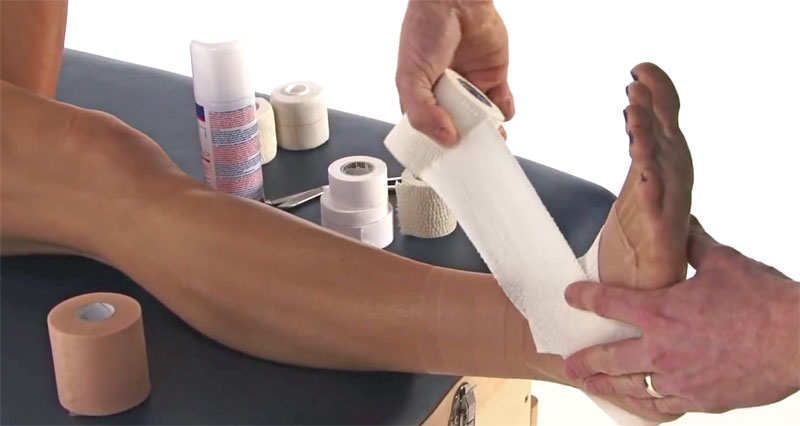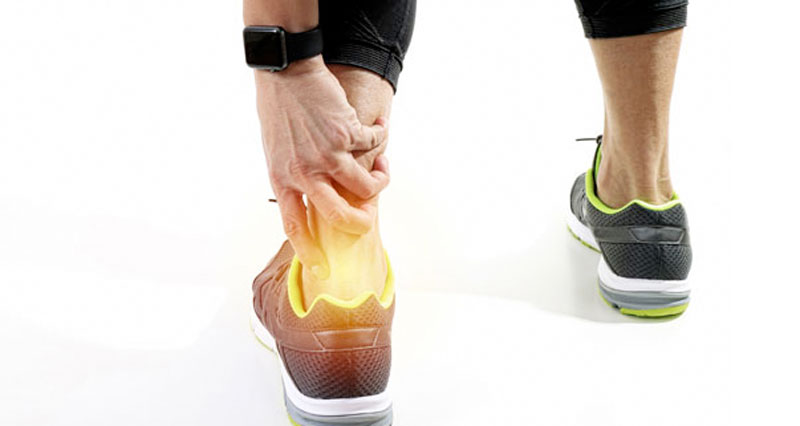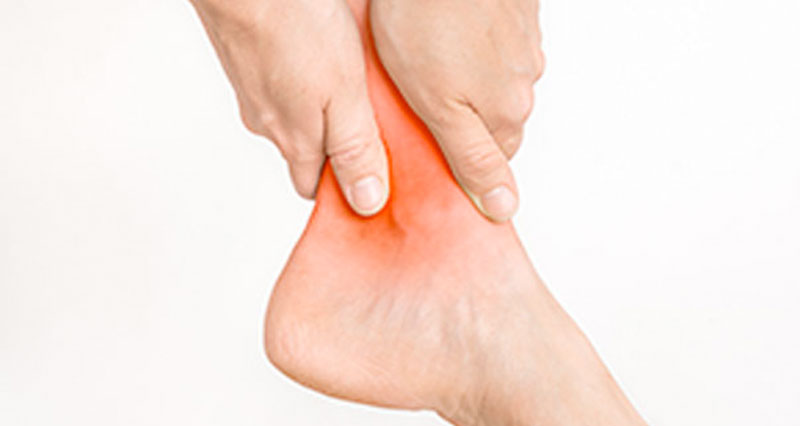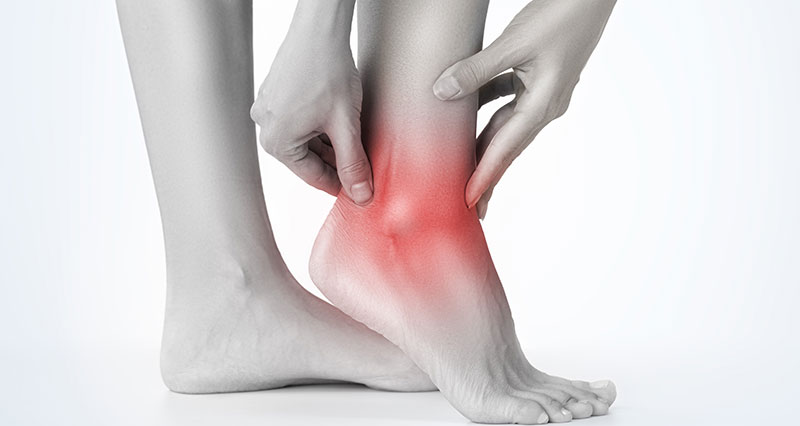Acute ankle injuries include sprains, strains, and fractures. They occur suddenly as opposed to developing gradually over time.
Sprained ankle
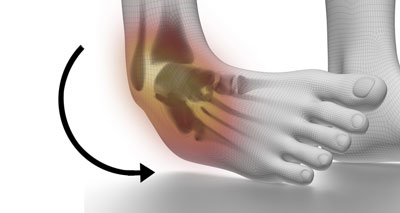
An ankle sprain is one of the most common sports injuries. It is caused by rolling your ankle inwards with symptoms of:
- Instant pain at the time of injury, which may be throughout the joint, or, specifically on the outside of your ankle where the damaged ligaments are located.
- Swelling may occur appear immediately or develop gradually over the following 48.
- Bruising may be visible over the following 48 hours.
- More on Ankle sprains
- Go to Ankle sprain rehabilitation
Eversion Ankle Sprain
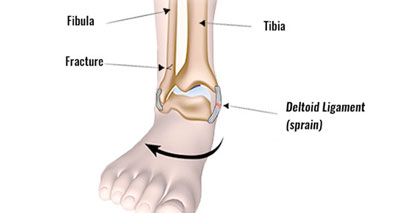
An eversion ankle sprain is rare and occurs when the ankle rolls too far inwards.
- The ligaments on the inside of the ankle are torn.
- An eversion sprain often occurs in conjunction with a fractured fibula bone.
- More on Eversion ankle sprain
High Ankle Sprain
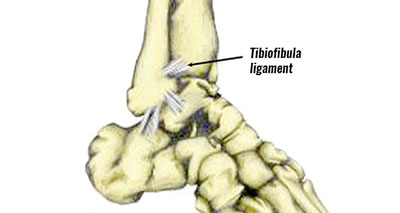
A high ankle sprain is a tear of the anterior tibiofibular ligament at the top of the ankle. A high ankle sprain is likely to be more severe and difficult to treat.
- Symptoms of a high ankle sprain include pain on tibiofibular ligament as well as swelling or bruising.
- The patient will have difficulty walking. Severe injuries can also cause damage to the membrane connecting the Tibia and Fibula (called the syndesmosis).
- A high ankle sprain sometimes occurs with a fracture of one of the lower leg bones.
- More on High ankle sprain
Ankle fractures & dislocations
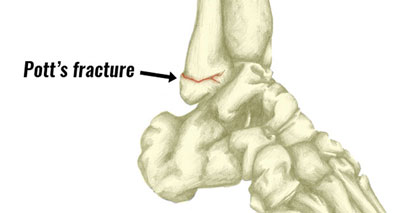
If you suspect a broken ankle then seek professional medical advice as soon as possible. Symptoms are often similar to a severely sprained ankle and include:
- Sudden pain with rapid joint swelling.
- Fractures can occur to the lateral malleoli on the outside of the medial malleoli on the inside.
- It can sometimes be difficult to separate a fracture from a sprain.
- An x-ray can show for sure if it is a fracture.
A dislocated ankle is a severe injury that usually happens in conjunction with a fracture or complete rupture of the lateral ankle ligaments.
- More on ankle fractures & dislocations
Osteochondral Lesions of the Talus
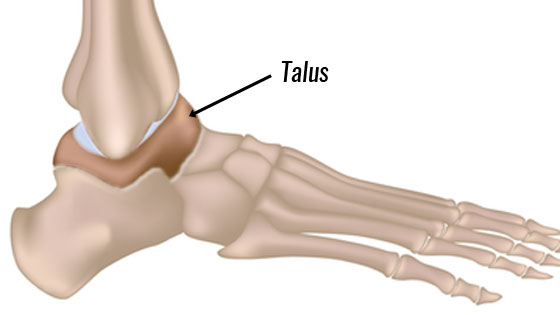
Osteochondral lesions are fractures of the tough, smooth cartilage which protects the ends of bones.
- The talus bone is located above the calcaneus (heel bone) and usually fractures in conjunction with an ankle sprain.
- As a result, Osteochondral fractures are often diagnosed later, when the injury fails to heal.
Ankle Avulsion Fracture
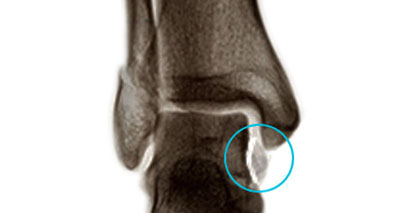
An ankle avulsion fracture occurs when a tendon or ligament comes away from the bone often pulling a small piece of bone with it. Symptoms of an ankle avulsion fracture are very similar to a normal sprained ankle making it very difficult to tell the difference without an X-ray or MRI scan.
- More on Ankle avulsion fractures
Immediate first aid for acute ankle injuries
Apply the PRICE principles for the first two to three days.
- Protect – Prevent the ankle from suffering further damage. Stop training or playing immediately and apply cold therapy and a compression wrap. Where applicable, use ankle support or brace.
- Rest – Refrain from exercise and try to reduce the demands of your daily activity to encourage recovery. It not only refers to the time that the athlete will be out of action but also to the immediate period after the injury. An athlete must know when to stop training and allow the injured area to heal otherwise repetitive minor injuries can often result in a more severe injury that keeps the athlete out for much longer.
- Ice – The application of ice or cold therapy to the area of the ankle injury/swelling can assist in reducing the symptoms of pain and inflammation.
- Compression – The use of compression support or compression bandages to the ankle can help reduce swelling and offer support.
- Elevation – Keeping the foot elevated above heart level whenever possible can help reduce swelling due to the effects of gravity.
- More on PRICE principles
When should I see a doctor?
The majority of acute ankle injuries can be treated at home. However, if you have any of the following symptoms then seek medical advice.
- Severe ankle pain
- Severe swelling
- You heard a pop or crack at the time of injury
- The ankle locks
- Altered sensation including numbness or pins and needles
- If you have applied the PRICE principles for three days and still have severe pain
- If you still have discomfort or weakness in the ankle after two weeks
- More on when to see a doctor
External links:
References
- Doherty C, Delahunt E, Caulfield B et al. The incidence and prevalence of ankle sprain injury: a systematic review and meta-analysis of prospective epidemiological studies. Sports Med 2014;44(1):123–40.
- Bahr R, Bahr IA. Incidence of acute volleyball injuries: a prospective cohort study of injury mechanisms and risk factors. Scand J Med Sci Sports 1997;7(3):166–71
